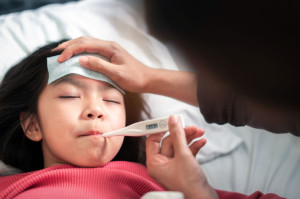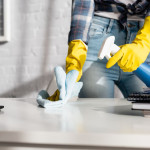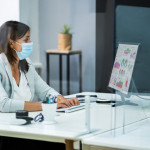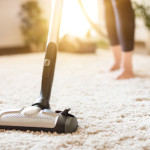 For parents of young children, the start of this year’s cold and flu season has not been easy. Across the country, pediatric hospitals, emergency rooms and pediatrician offices are filling up with young patients exhibiting symptoms of respiratory syncytial virus or RSV. RSV is a very common virus. Most children catch the virus before they are two years old. It usually causes symptoms similar to the common cold, like a runny nose, wheezing cough, fever, and decreased appetite. It typically lasts one to two weeks, and most patients get better with rest and fluids. However, in extreme cases, RSV can cause dehydration and breathing trouble or lead to pneumonia or bronchiolitis. Even though RSV is so common, the strain circulating this year is having an unprecedented effect on young children. After two years of living with COVID-19 health measures, many of these children have not built up sufficient immunity to fight off the disease, triggering the sharp rise in cases.
For parents of young children, the start of this year’s cold and flu season has not been easy. Across the country, pediatric hospitals, emergency rooms and pediatrician offices are filling up with young patients exhibiting symptoms of respiratory syncytial virus or RSV. RSV is a very common virus. Most children catch the virus before they are two years old. It usually causes symptoms similar to the common cold, like a runny nose, wheezing cough, fever, and decreased appetite. It typically lasts one to two weeks, and most patients get better with rest and fluids. However, in extreme cases, RSV can cause dehydration and breathing trouble or lead to pneumonia or bronchiolitis. Even though RSV is so common, the strain circulating this year is having an unprecedented effect on young children. After two years of living with COVID-19 health measures, many of these children have not built up sufficient immunity to fight off the disease, triggering the sharp rise in cases.
What can you do to protect your children?
The first thing you need to know about RSV is that it’s highly contagious, especially among young children. Adults often don’t notice that they have it or experience mild symptoms like a runny nose or headache. But they often spread the disease to young children since it’s twice as contagious as influenza. RSV spreads through respiratory droplets from coughing or sneezing or through contaminated surfaces. So the best way to prevent your child from catching RSV is to practice proper hand hygiene, avoid other sick people, and stay home when sick.
What cleaning measures should you take to protect against RSV?
As any parent knows, young children’s toys are always dirty. They drool on them and put them in their mouths. Unfortunately, young children also don’t cover their coughs or sneezes, which makes it easy for germs to spread on contaminated surfaces. That’s why it’s essential to frequently clean and disinfect toys, play objects, and areas where children spend time during RSV season to avoid spreading the virus. It’s also necessary to regularly clean and disinfect any high-touch areas like door handles, railings, elevator buttons, or light switches.
The MicroShield 360 system can help!
One tool we offer that can give parents, business owners, childcare providers, or school administrators some more peace of mind during this challenging season is our MicroShield 360 system. This antimicrobial system prevents disease transmission from respiratory droplets like RSV or influenza. Here’s how it works:
- Our trained technicians apply the two-part MircoShield 360 solution using an electrostatic sprayer to ensure even application.
- Once the solution is in place, it adheres to the surface and forms an antimicrobial coating that polymerizes the surface, which creates an invisible barrier that prevents the growth of bacteria that lands on the surface.
- With the coating in place, any contagious respiratory droplets are neutralized immediately when they land on the treated surface.
The Microshield 360 system is EPA-registered and FDA-approved for direct food contact surfaces and for hundreds of other surfaces. It lasts up to one year, providing an extra layer of protection when infectious diseases like RSV spread fast. This year, it may be a great tool to keep young children safe while this virus spreads in the community. If you’re interested in a treatment for your business or home, give our team a call!








